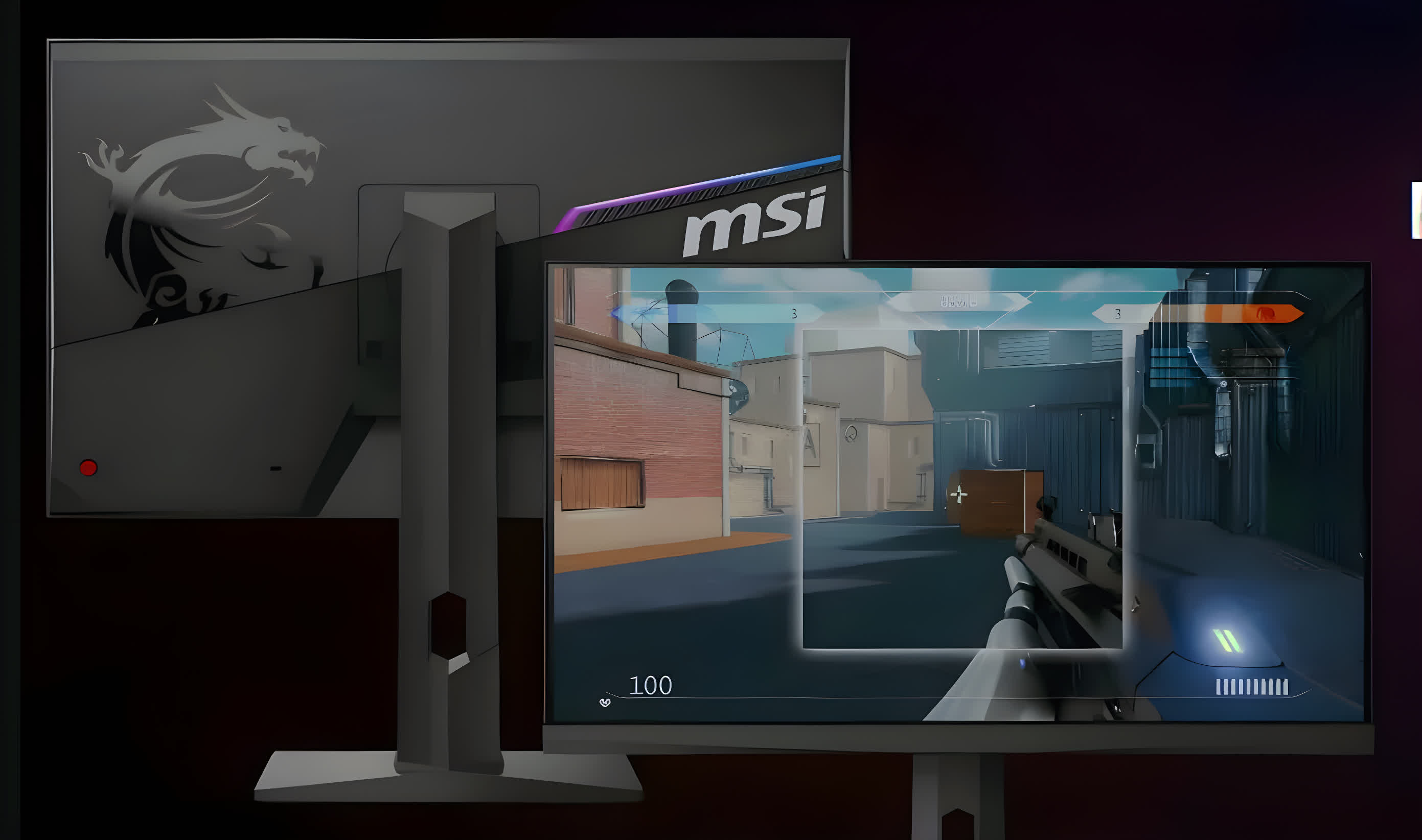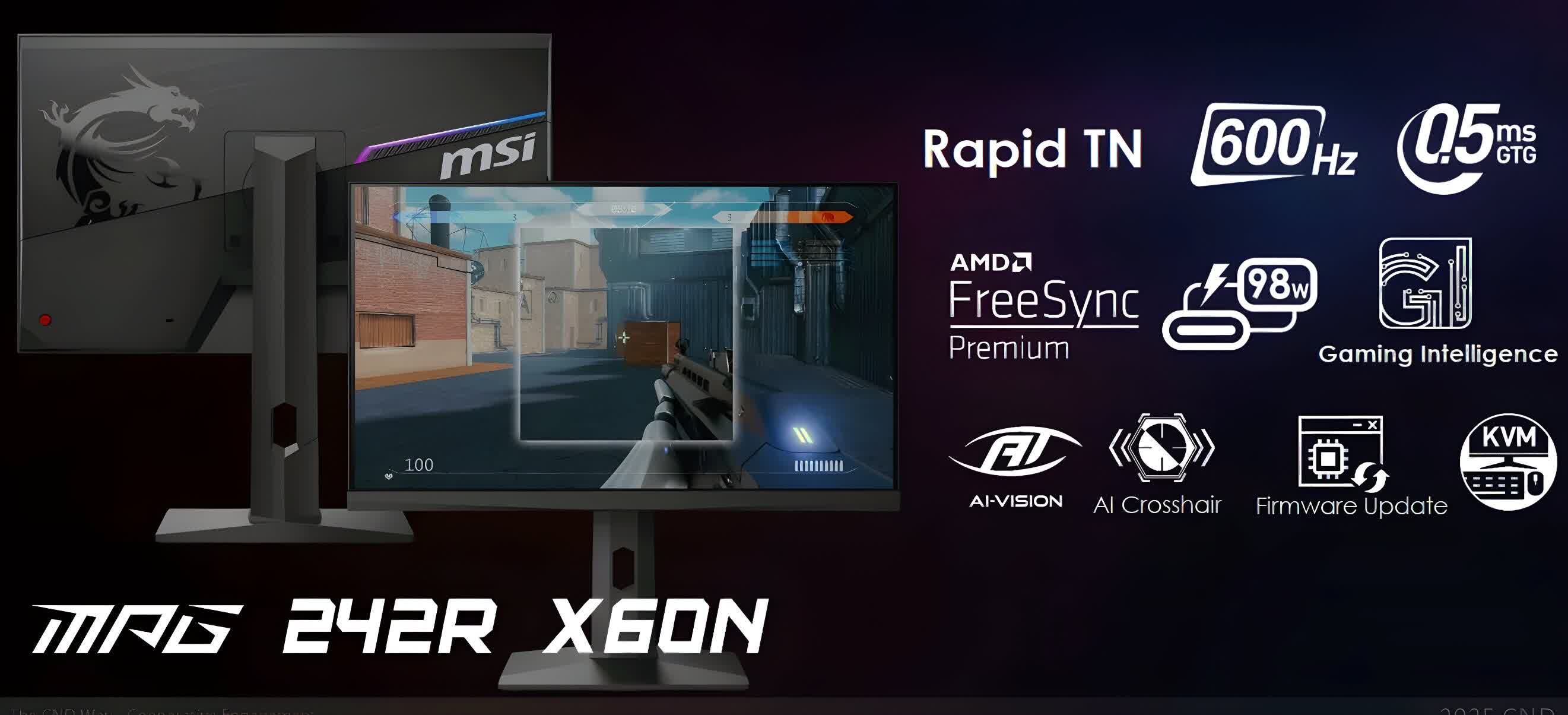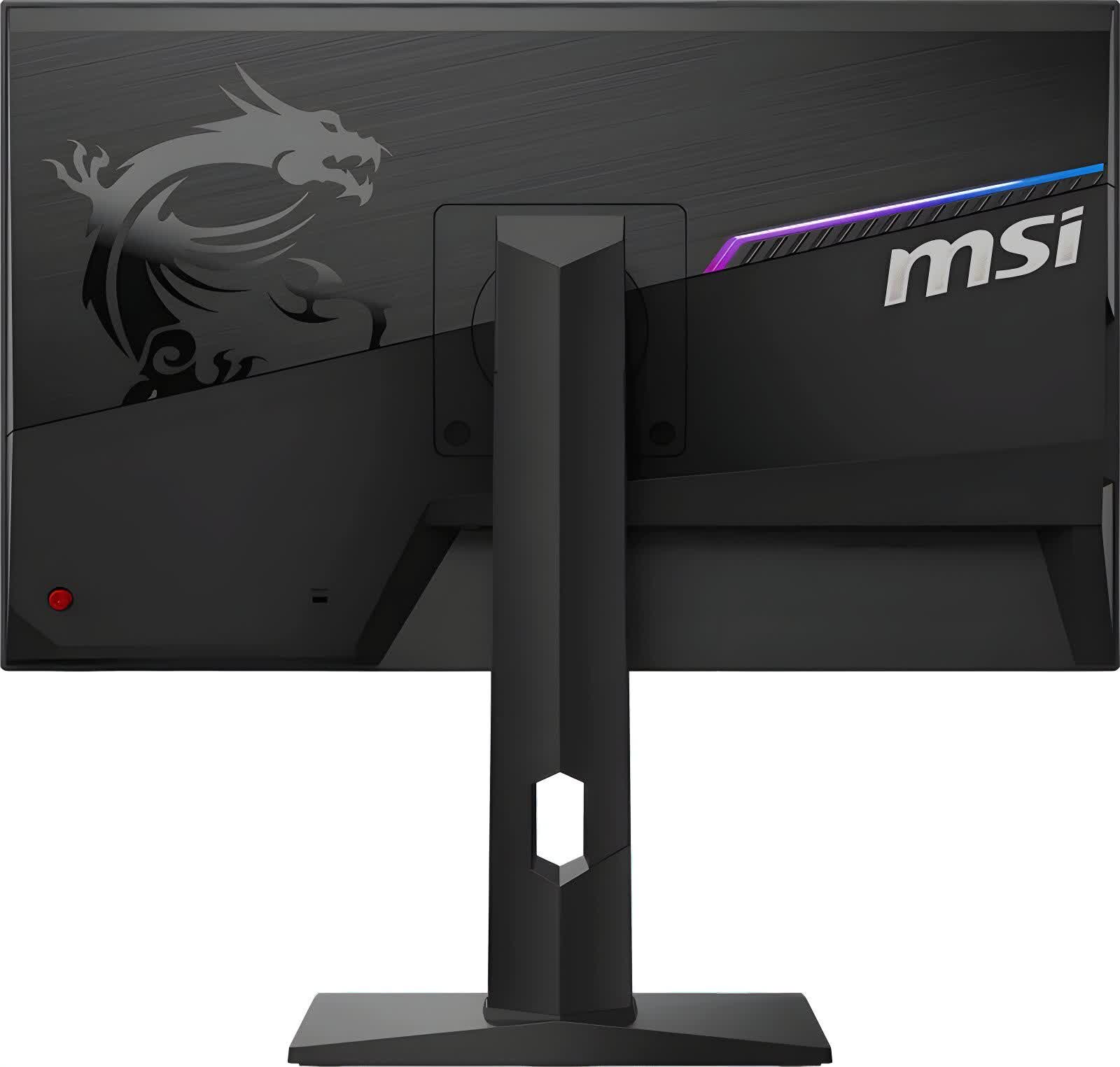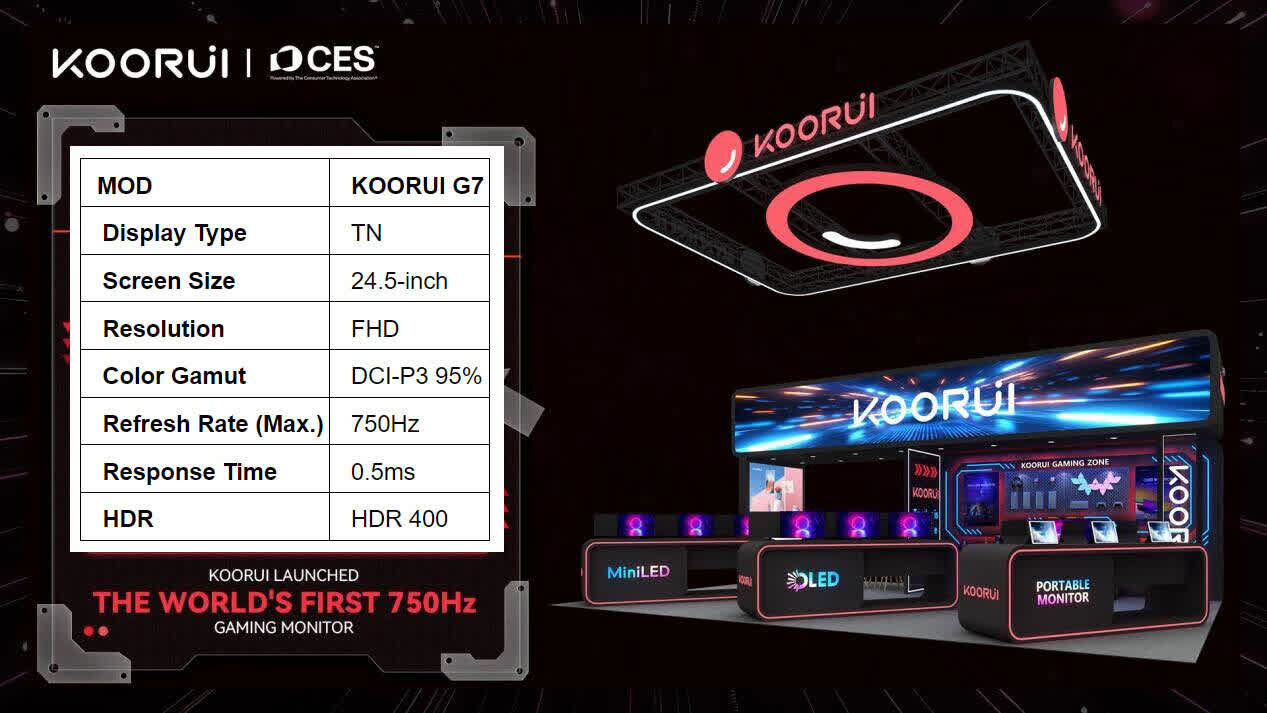Something to look forward to: Are gaming monitor refresh rates becoming too high? MSI doesn't seem to think so. The company has just announced a new product that can reach an incredible 600Hz. But in a "hold my beer" moment, Koorui says its monitor has a 750Hz refresh rate.
Joining the long list of products being announced ahead of CES is MSI's MPG 242R X60N. The monitor is aimed firmly at the esports crowd, with its 24.1-inch size, 1080p resolution, and high refresh rate.
We've seen plenty of similar esports-focused displays with 540Hz refresh rates before, including models from Asus and BenQ. MSI's version increases this up to 600Hz.
The MPG 242R X60N features a "Rapid TN" panel with a 0.5ms GtG response time. The full specs haven't been listed, but we do know it comes with adaptive-sync for VRR, is AMD FreeSync Premium Pro certified, and has a USB Type-C port with 98W power delivery and probably a DP Alt mode. There's also a KVM switch, updatable firmware, and MSI's gaming features such as AI Vision and AI Crosshair.
If, for some reason, 600Hz just isn't fast enough for you, Koorui, a tech and lifestyle brand that's a subsidiary of semiconductor display giant HKC, says it will be showing off the world's first consumer-grade monitor with a 750Hz refresh rate.
The Koorui G7 is another 24.5-inch esports-focused monitor with a 1080p resolution on its TN panel. The company writes that to compensate for the color defects of the TN panels, the screen uses the latest QD film with a wide color gamut solution, which enables 95% DCI-P3 coverage.
Like MSI's 600Hz monitor, the Koorui G7 has a 0.5ms response time. It also comes with HDR support and is able to reach 400 nits, though there's no mention of VESA DisplayHDR 400 certification.
In addition to the G7, Koorui will be showing off a 480Hz 4K gaming monitor (the OG32UK) and a 49-inch DQHD ultra-wide gaming monitor with a high refresh rate (the GS49UK) at CES.
MSI, meanwhile, will also have its 27-inch OLED 240Hz monitor at the show. Asus and Samsung have their own versions, with all three companies claiming their products are world firsts.
MSI reveals 600Hz gaming monitor, Koorui one-ups with 750Hz model




